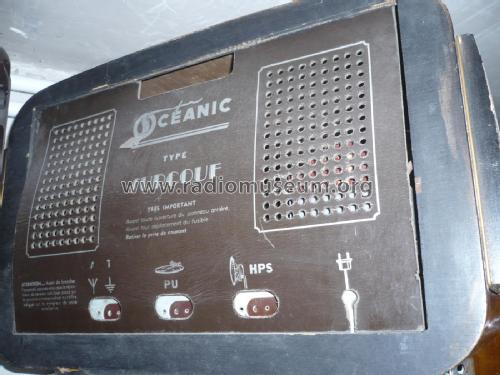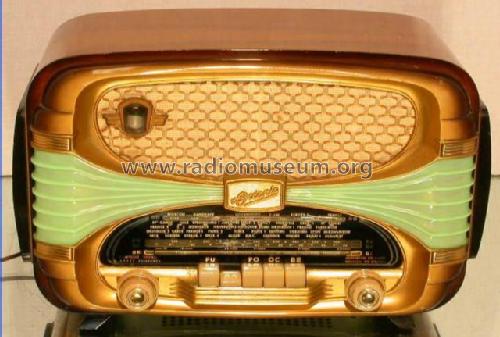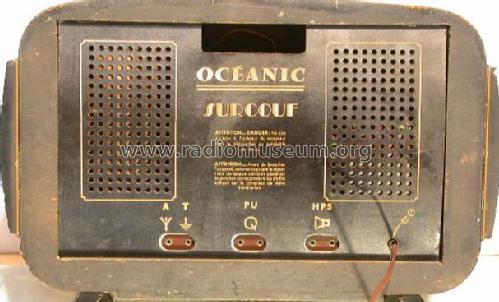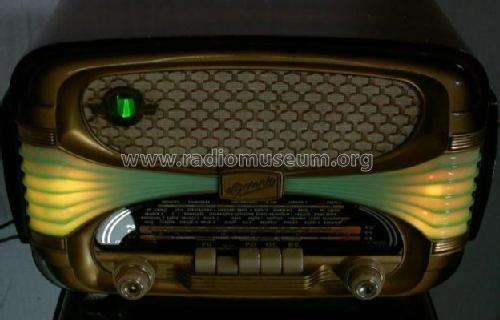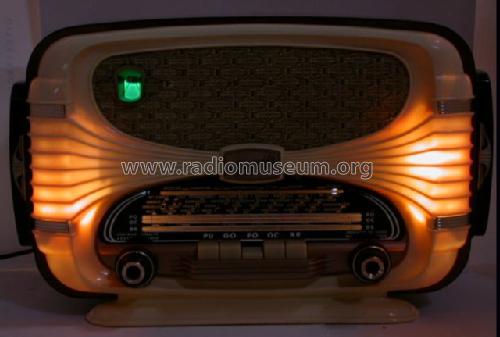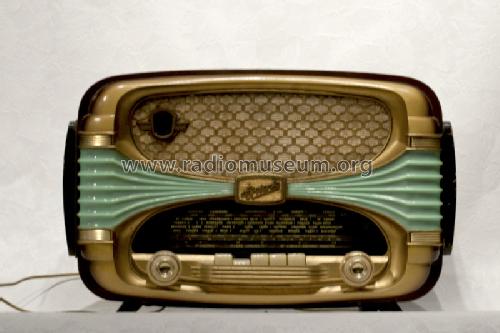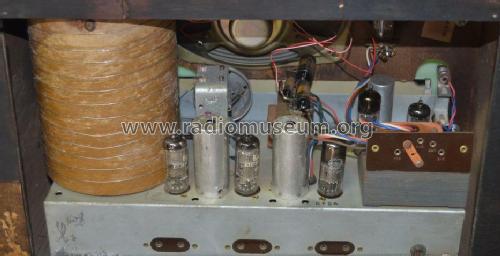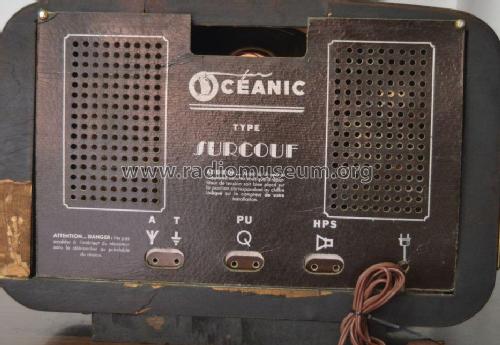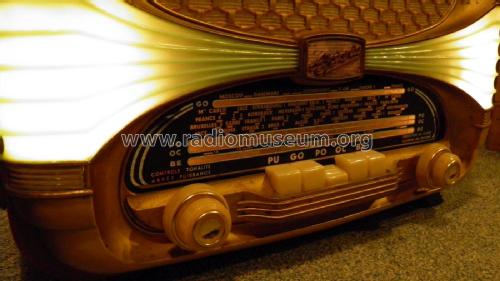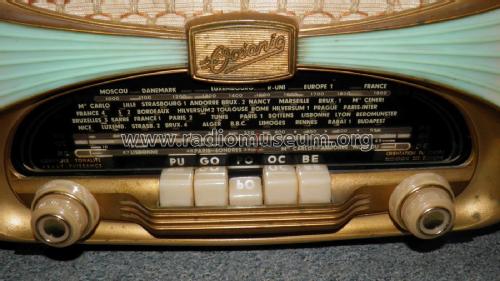Surcouf avec cadre - EM80
Océanic, ITT Océanic; Paris
- Country
- France
- Manufacturer / Brand
- Océanic, ITT Océanic; Paris
- Year
- 1956 ?
- Category
- Broadcast Receiver - or past WW2 Tuner
- Radiomuseum.org ID
- 98964
Click on the schematic thumbnail to request the schematic as a free document.
- Number of Tubes
- 6
- Main principle
- Superheterodyne (common)
- Wave bands
- Broadcast, Long Wave and 2 x Short Wave.
- Power type and voltage
- Alternating Current supply (AC) / 110-240 Volt
- Loudspeaker
- Permanent Magnet Dynamic (PDyn) Loudspeaker (moving coil) - elliptical
- Material
- Wooden case
- from Radiomuseum.org
- Model: Surcouf [avec cadre - EM80] - Océanic, ITT Océanic; Paris
- Shape
- Tablemodel with Push Buttons.
- Dimensions (WHD)
- 20 x 12.5 x 10 inch / 508 x 318 x 254 mm
- Notes
- Océanic Surcouf;
Blue and gold colored front panel, unique illuminated,
LW, MW, BE - Bande étalée: ~47 - 50 m,
SW: ~16 - 49 m band,
tone control, built in antenna coil, tuning indicator tube, terminals for phono-in, ext. speaker & antenna/earth. The surcouf has a built in shielded antenna - see the cylinder on the left.
- Author
- Model page created by Gottfried Silberhorn. See "Data change" for further contributors.
- Other Models
-
Here you find 157 models, 134 with images and 40 with schematics for wireless sets etc. In French: TSF for Télégraphie sans fil.
All listed radios etc. from Océanic, ITT Océanic; Paris
Collections
The model Surcouf is part of the collections of the following members.
Forum contributions about this model: Océanic, ITT Océanic: Surcouf
Threads: 3 | Posts: 6
Radio enthusiasts, how does the vertical loop antenna drum work in the Oceanic Surcouf?
Every AM loop antenna I have ever seen always had a horizontally oriented axis.
The reason for this is that AM transmitters generally transmit with a vertical mast, which polarizes the magnetic field into horizontal magnetic field line circles.
I can't help but wonder if French transmitters used a different polarization, perhaps with some other benefit that I am not aware of, like lower noise, better imunity from fading, or rejection of stations with a conventional polarization.
What bands is the drum for?
Regards,
-Joe
Joe Sousa, 16.Jul.09
Norbert Haselbach, 13.Mar.07
Norbert Haselbach, 13.Mar.07


